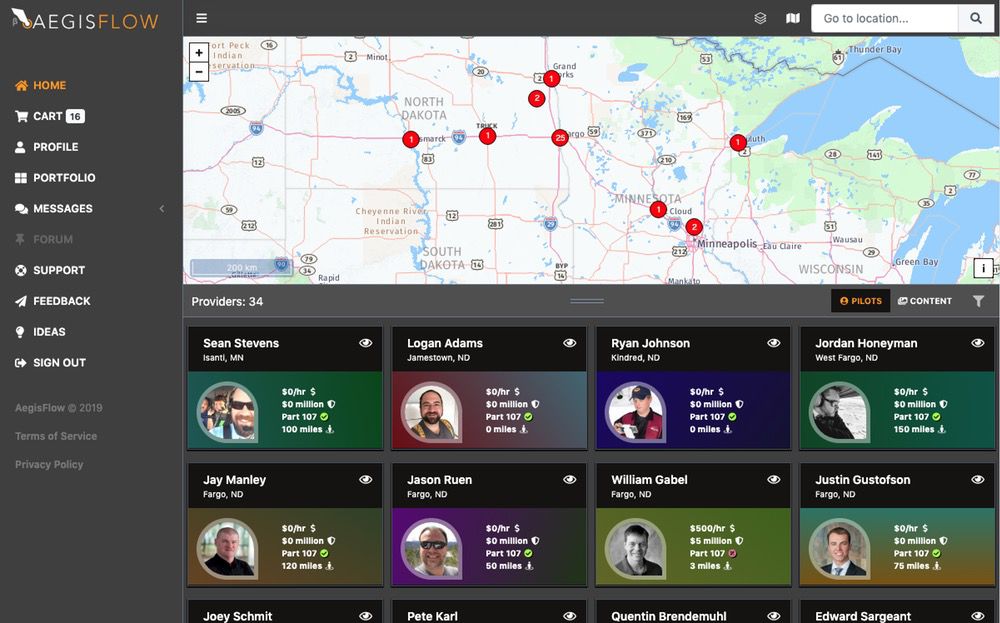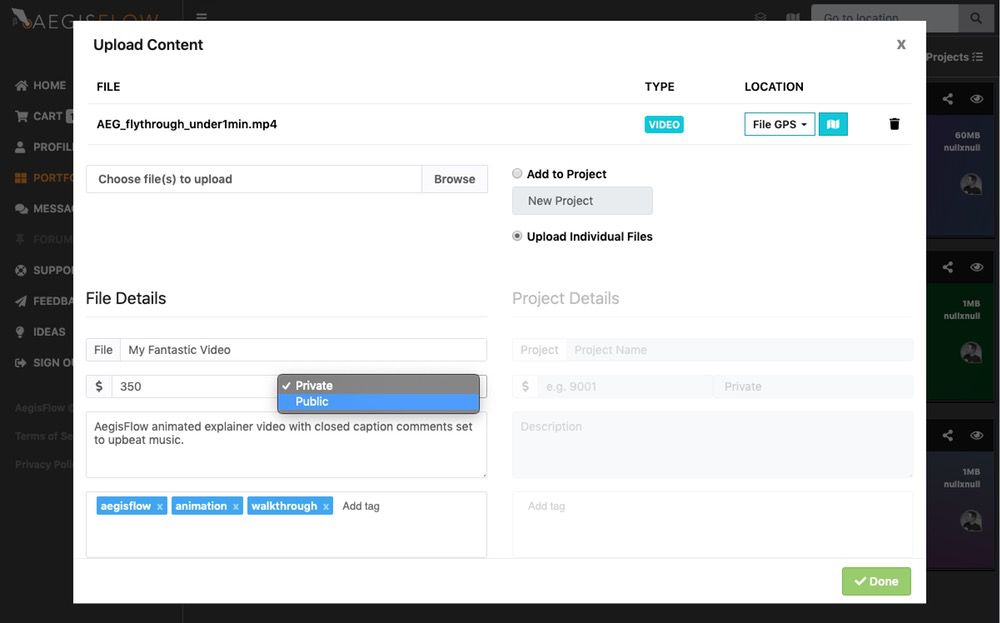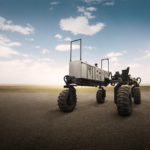Photo by J. Alan Paul Photography
The gig economy is having a massive effect on almost every industry. Now AegisFlow is taking that business model to drones. AegisFlow is an online marketplace for drone pilots to upload, stream, share and sell photos, videos and 3D modeling content. Drones are being used in agriculture, but they are close to becoming even more impactful and CEO Anthony Molzahn has some thoughts on where the industry is going.
gig e·con·o·my
noun
a labor market characterized by the prevalence of short-term contracts or freelance work as opposed to permanent jobs.
Q: Where is Aegisflow at in terms of launching?
A: September!
AegisFlow is nearing the end of alpha testing and moving into beta production in May. Once our beta testing completes, AegisFlow will be made available to the general public. Thereafter, a formal launch of version 1.0 will likely take place at Interdrone in Las Vegas at the beginning of September.
Q: Drones are just touching the surface of what they can do with agriculture. What do you think the future holds from drones and agriculture?
A: It might be hard to believe, but drones will play a vastly different role than what is generally perceived today. What do I mean? Repeatedly capturing detailed imagery on thousands of acres isn’t a reasonable task for a drone or of the commercial drone pilot commanding the vehicle. Nor is it a reasonable task to continually air drop chemicals, seed or fertilize on those same acres.
Instead, consider the big picture of a farming operation; think about all of the decisions the farmers, consultants, agronomists, seed dealers, insurance adjusters and any other third parties make to encourage an operation’s success. Let us weave unmanned vehicles into the operation and augment the services of the aforementioned. One example of this: dispatch a drone to snap photos and videos of suspicious locations an agronomist identifies in areas not feasibly accessible…it seems that trudging through seven-foot corn on a balmy July day may not be the best use of an agronomists time, especially if there are tools available to take on some of the workload.
Yes, drones can be (and are) used to capture detailed imagery, as well as be used to seed, apply chemicals and fertilize. The future of drones in agriculture will be decided by the critical farm operation teams to gain the insight on exactly when a drone is going to actually improve the bottom line.
Q: Tell me about what future you see Aegisflow playing in the future use of drones in agriculture?
A: Largely predicated on the assumption that a given farming operation wants to integrate drones into their workflow, AegisFlow is there for that operation team to connect with and contract a commercial drone pilot in their area to fly. In this way, AegisFlow’s purpose is to provide visibility of the pilots to those looking for them to do great work.
There are other cases where someone in the farming operation will have hired, contracted with or even themselves become a commercial drone pilot. AegisFlow’s content sharing and streaming services were built specifically for the pilot to present drone-captured information to key members as needed.
Q: Talk about Grand Sky and how the work they’re doing will help shape drones in North Dakota.
A: Grand Sky’s team and partners are bright, passionate and dedicated to fostering a healthy business-system for unmanned aircraft use cases.
“North Dakota + Drones” is now a relatively common connection made by those interested in this space across the country and the world. Grand Sky has done a lot of the legwork to make it so and it appears they are just getting started.
Q: Grand Farm will have a lot positive things stem from it but what do you think will be the largest and farthest reaching things to come out of it?
A: What would be super cool is if everyone who reads this issue of Fargo INC! would send in their own response to this question to Brian Carroll of Emerging Prairie. Idea validation and insight from the community is important, especially right now where Grand Farm is just getting started.
Now for a less safe answer. An autonomous farm removes needless bottlenecks each farming operation faces every year. Sometimes, this means automating a manual or repetitive task someone is doing, therefore enabling them to spend more time on skill-based decisions. Sometimes, this means replacing an entire role. Now, if you’re reading this thinking, “See! Drones are going to ruin the world by taking all our jobs!” that’s an interesting thought, but you would be incorrect.
Surely, you wouldn’t want to willingly suppress a human’s ability to expand their knowledge-base and skillset after you’ve already figured out how to automate a given set of tasks or roles? Every time we have figured out how to automate a fragile and complex or repetitive task, we have been smart enough to respond diligently with what to do next. Every time.
Grand Farm will create more rewarding and fulfilling work for everyone involved in every farming operation. If you still aren’t convinced, then it’s a good thing Grand Farm will test this on forty acres. There, we will see what we need to do to prepare ourselves for a future where one third of the Earth’s land will be hands off.
Q: It’s interesting to me how you are bringing the gig economy to drones. Do you think that will come to other occupations within the agriculture industry?
A: Every year, a farming operation is able to take on more work while simultaneously becoming more granular with each decision made. This means each farming operation, as it has been done since the inception of farming thousands of years ago, will continue to grow their reliance on outside agencies of providing expert-level services to grow more quality food faster and for cheaper.
The use of drones and, ultimately, the partnership of agriculturally savvy commercial drone pilots is now one of the newest outside agencies a smart farming operation has available to make use of. As mentioned earlier, the future of drones in agriculture will be decided by the critical farm operation teams to gain the insight on exactly when a drone is going to actually improve the bottom line.
Now is the time for every farm operation to answer these questions for themselves, “What are the most important tasks to automate first?” and “When those tasks are automated, how will we reallocate our team’s time for other, more important work?”
How it works
1. Login after creating an account at aegisflow.com.
2. Keep your profile up to date on who you are, what industries you fly in and how much you charge for the work you do.
3. Maintain your portfolio. Upload and set values for any photos and videos you’ve created.
4. Connect your bank account so you can instantly get paid when folks purchase work from your portfolio.
5. Share your work. Drop in a link of your portfolio into your social media spheres or directly to clients and show folks what you’re capable of!
6. Other features you can take advantage of include content organization, instant messaging and a community idea board.






